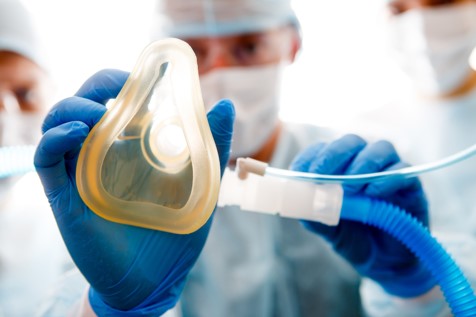It would be difficult and presumptuous to try to cover all the recent advances in the field of anesthesia in one article, but a few new developments which have changed the way we manage our anesthetics deserve mention. Those included have been chosen for their relevance to adult general anesthesia, through the lens of practice at a large academic hospital.
Surprisingly few changes to our anesthetic medications have taken place over the history of our field. The development of sugammadex is arguably a notable one. Changing the way we reverse nondepolarizing muscle relaxants, sugammadex directly binds and inactivates the aminosteroid rocuronium (as well as pancuronium and vecuronium with less affinity; benzolisoquilinones such as cisatracurium are unaffected). Instead of waiting for the return of twitches, the anesthesia provider can increase the dosage of sugammadex to overcome heavy paralysis. The more rapid and reliable neuromuscular blockade reversal not only allows for improved postoperative patient safety, but offers the opportunity to provide total relaxation until the very end of surgery with reversal within 90 seconds. It also allows the safer use of high dose rocuronium in rapid sequence inductions where succinylcholine is contraindicated. It is not approved in patients with end stage renal disease and may interact with oral contraceptive effectiveness, but generally has a favorable safety profile.
Advances in anesthetic equipment have been steady and fruitful, with video laryngoscopes, fiberoptic techniques, and laryngeal mask airways changing the field of airway management. A recent adjunct to these is transnasal humidified rapid-insufflation ventilator exchange (THRIVE), otherwise known by its trademark, Optiflow. Via nasal cushions, Optiflow delivers up to 60L/min of humidified oxygen, with high enough flows to decrease dead space, provide PEEP, provide a constant high FIO2 to alveoli, and partially wash out accumulating carbon dioxide. This method of apneic oxygenation has been used in paralyzed patients during ENT procedures such as microlaryngoscopy lasting 30-60 minutes in duration without significant desaturation, limited only by buildup of CO2, which can be exceedingly high. Patient selection is key, with those unable to tolerate severe hypercapnia (e.g. pulmonary hypertensive patients) being poor candidates for prolonged use. THRIVE has also become a useful adjuvant in difficult airway management, providing improved preoxygenation and longer periods of tolerated apnea during airway management. Caution should be used in patients with airway tumors or other obstruction to airflow, for much like jet ventilation, barotrauma can potentially develop.
There has been, in recent years, a move away from the narcotic-based general anesthetics, towards multimodal approaches incorporating regional/neuraxial techniques and adjuvant analgesics such as ketamine, lidocaine infusions, IV acetaminophen, and NSAIDs. Patients are becoming increasingly more comfortable having their operations performed under local or regional blocks, and the concept of being “awake” during surgery is no longer as alien as in the past.
Anesthesia providers are known for our adaptability, and in an ever-changing field full of exciting new advances, it is useful for us to review the changes to our practice and deliver the optimum care for our patients.
